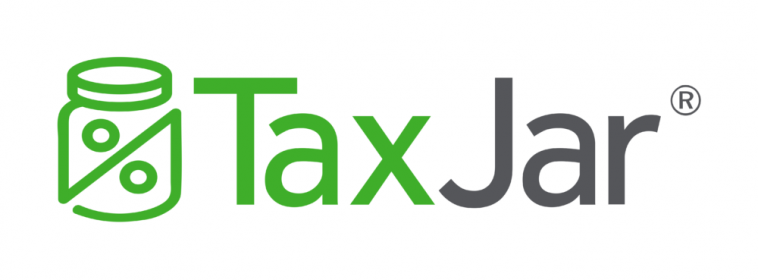- Like
- SHARE
- Digg
- Del
- Tumblr
- VKontakte
- Flattr
- Buffer
- Love This
- Save
- Odnoklassniki
- Meneame
- Blogger
- Amazon
- Yahoo Mail
- Gmail
- AOL
- Newsvine
- HackerNews
- Evernote
- MySpace
- Mail.ru
- Viadeo
- Line
- Comments
- Yummly
- SMS
- Viber
- Telegram
- JOIN
- Skype
- Facebook Messenger
- Kakao
- LiveJournal
- Yammer
- Edgar
- Fintel
- Mix
- Instapaper
- Copy Link
When we started TaxJar, we did it with small business customers in mind. We created a product that was simple to use for entrepreneurs who were juggling a thousand different priorities and didn’t have (and didn’t want) an expertise in regulation, compliance or sales tax. As we matured as a company, though, so did our product — and that caught the eye of larger customers.
Of course, we were excited by the opportunity those larger customers represented, but it scared us a bit, too. There was a lot we didn’t know. Small businesses and mid-size businesses have different needs, and often require a different approach in terms of product design, customer service, sales, marketing, and more. But we did take the leap. And it’s paid off.
For any of you out there looking to move into other markets yourselves — whether to a different sector or company size — here are a few things we learned along the way you might want to keep in mind.
Be honest: Is your product ready?
This was the first question we had to ask ourselves as we began getting approached by larger customers — because if you’re not confident in the product, none of the other stuff really matters. We asked ourselves if we were ready for prime time — if we could handle the volume of the midmarket, which was magnitudes larger than past customers had required. We tested and tweaked obsessively to ensure there would be no issues with calculations, integrations and automatic filing. Although we had always built with the intention to scale, we wanted our product and engineering teams to be confident as we took on larger customers.
This evaluation didn’t happen overnight, and it meant delaying our foray into the midmarket, but if we had gone ahead with a product that we weren’t sure could handle our new customers, we could have sunk our prospects for the future.
Getting to know your new customers
When you work in a particular market for a long time, you get to know the customers intimately. It’s natural. And since we’ve been serving small businesses from the beginning, we like to think we’ve gotten to know them very well. We’ve talked to entrepreneurs and small business leaders about what motivates them, what challenges them, what they need. But when we started looking upmarket we knew we had a lot to learn about businesses of this size and the people who lead them. How were we going to give them the kind of product and experience they needed without understanding what those needs were?
So, we took a step back. And much as we had done with our small business customers, we started asking questions. Lots of them. We reached out to customers and prospects to do deep dives into their businesses and learn the intricacies of how they operated as well as the different roles inside those businesses and how they worked together. Since TaxJar focuses on sales tax compliance for e-commerce, we needed to know how sales, finance and technology came together for these companies. Who were the different stakeholders involved? What were their challenges? What did they hope for? What were they afraid of? What were they looking for in our product and services?
Armed with these first-hand interviews along with a ton of research, we were able to clearly define our different customer segments along with the roles and responsibilities within each of those segments. Unlike small businesses, where we often see a single person making all of the major decisions, with the mid-sized companies we were dealing with different leaders in IT, finance and the exec team.
We took this information and used it to shape every aspect of our approach: from our product to the way we talk about it on our website and in marketing materials.
Sales motion, account management and customer experience
Going upmarket has shifted how we do business — from how we approach sales to onboarding and retention. We found ourselves in a much longer, more nuanced sales cycle, where it was imperative to work proactively rather than just reactively. Unlike our SMB customers, midsize businesses tend to have multiple key decision makers, including finance, product, IT, security and legal. Our larger customers needed more time to vet us. We had to learn to be patient, and nurture these larger accounts throughout their decision-making process.
Because of the complexity involved with servicing larger customers, we also developed account managers to help with onboarding and beyond. In addition to the practical aspects of having a dedicated rep, we’ve found this kind of personalized service helps grow the client relationship as well. In addition, we’ve continued to invest in creating an exceptional customer experience — including online courses, support articles, developer documentation, a soon-to-launch customer community, and more — for both small and large businesses.
No customer left behind
There’s one last thing that’s been essential for us to keep in mind on this journey: our intention was never to shift our market from small businesses to midsize businesses. Our intention was to grow our market to include both. As we moved upmarket, we knew there was a danger of losing sight of our small business customers in our excitement to grow, so we’ve been very intentional about never forgetting the market that got us where we are today. Our innovations in customer experience and automation work best when they work for all of our customers. And we hope that with the help of our product, some of those small e-commerce businesses will grow into the midsize category that we now serve.
This blog post is brought to you by TaxJar.



